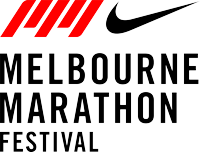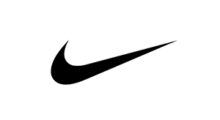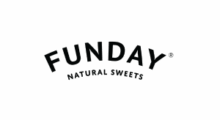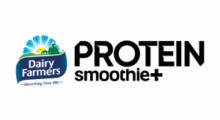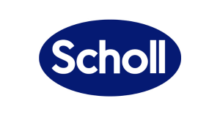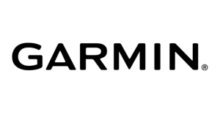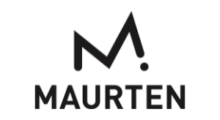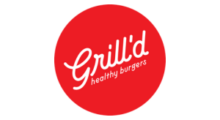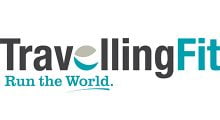Melbourne runs on hydrogel.
Soon enough, you’ll be crossing the finish line at the MCG. But your start line is now — in training. This is your chance to practice the art of fuelling with Maurten Gel 100 and Drink Mix 160 — the same that you’ll have available during race day. As the official Hydrogel Sports Fuel Partner of the 2025 Nike Melbourne Marathon Running Festival, Maurten will be with you on-course.
Maurten on track.
As the official Hydrogel Sports Fuel Partner for the Nike Melbourne Marathon Festival, Maurten will be there with you, on-course, to fuel you all the way to the MCG.
Hydrogel Fuel Depots — with Drink Mix 160 and Gel 100 — will be served at the following points:
Drink Mix 160: km 6, 11.2, 17, 19,2, 24.2, 27.3, 29.5, 36.5, 39.8 and 41
Gel 100: km 11.2 and 29.5
Get used to the on-course fuel.
Start getting used to Maurten in training now — order on maurten.com.au using code MM25 and save 20%
How to fuel
Fuel Guides are written for specific sessions — to maximize the adaptations from carefully structured training. Single sessions often represent stepping stones and incremental progress on a longer journey towards a goal. Whether an athlete is training three times each week or several times every day, it’s important to apply an appropriate strategy for the aims of the individual. An isolated session is nothing without planning the long-term training load.
Nail the basics
Fuel Guides are written for athletes who already have a basic understanding of nutrition and the role of real food. Maurten products are not a replacement to real food; they are an extension, supported by science to meet the demands of endurance sport — before, during and after. Where possible, athletes should stick to normal eating patterns with real food. As with all elements of training, in the long-term, consistency matters. Consider a visit to a sports dietician to check if you have got the basics nailed.
Dare to adjust
Fuel Guides are a starting point, but we are all different. Individual training and nutrition needs are highly nuanced — one size does not fit all. Body composition, sweat rate, climate, type of sport, training status, intensity and tolerance will all vary from one person to the next. And then it’s important to understand an individual’s sensitivity to ingredients such as caffeine as well. A Fuel Guide can be adjusted to suit your needs — to optimize the session — so that it delivers the right outcomes at that moment in the training journey.
Same session, different exertion
Each Fuel Guide represents a training session. The experience of that session will be different depending on the relative fitness and form of the individual. For example, an elite runner (RPE 8-9) could be above anaerobic threshold with a session of 5×5 minutes at 10k pace. For a different runner (RPE 6) — perhaps someone aiming for a 60-minute 10k race — 5×5 minutes would be a moderate, sub-threshold effort.

Training recommendations
Fuel isn’t only for race day. Three reasons why you should implement a Maurten fuel strategy into your training:
Control the controllable
The training period is when you get to know your body. When you learn what it’s capable of. It’s a process of working out the best way to race. Test and experiment in training to understand how your body responds to different circumstances, intensities and durations. Then bring that all together on the start line.
It’s a simple mantra — what you do in training is what you do in the race. Test your race day protocol. The simplest trick is to mirror the race timings and plan your training nutrition around the on-course fuel stations — our Long Run fuel guide is a perfect example of this.
Tired, not empty
Recovery starts before you finish a session. Maintain a fueling strategy to the end of training so that you don’t finish in a depleted state. With training complete, it’s then time for rapid rehydration and replenishment of glycogen stores. Feeling tired is appropriate. Feeling empty is not. To get the best out of the next session, recovering properly is vital — our Training Guides will help you optimise your hard training sessions.
Do you want to finish or perform?
Science has shown that training our guts with certain amounts of sports nutrition decreases the likelihood of gastrointestinal distress on race day. GI discomfort is a significant inhibitor to performance. By fueling training with the right amount of carbohydrates per hour, our bodies can adapt and get used to it.
Fuel like a pro.
The following Fuel Guides outline fuelling strategies for common running training sessions and race plans. A fuel guide is highly personal. Use this information as reference only to fuel your training and racing better.
Sports fuel is supported by science and works alongside real food — not as a replacement. Some Fuel Guides — longer or more intense — rely heavily on the specific composition of sports nutrition. Others less so.
Why should I use sports nutrition during exercise?
Gels are developed to optimize your intake and absorption of carbohydrates during higher intensity activity. They are designed to pass quickly through the stomach, to the intestines, reducing the risk of gastrointestinal distress. During low intensity exercise you do not need to use gels. Food works. As intensity builds, blood is diverted away from the stomach and digesting food becomes more challenging. This is when you can transition to gels.
How do I combine Maurten products to get the right amount of carbohydrates per hour for my sport?
The Maurten range of sport fuels can act like a modular system, enabling athletes to pick and choose their preferred format for the training and racing situation. Products can be combined to attain the desired amount of carbohydrates. Fueling should be considered before, during and after an activity. Load glycogen stores before, maintain performance throughout, avoid depletion and recover to go again next time.
How can hot weather conditions affect my nutrition plan?
In hot weather your fueling plan is unlikely to change. However, hydration needs will vary as temperature and sweat loss increase, accelerating the risk of dehydration. Dehydration inhibits the body’s ability to regulate temperature. In general, it is suggested that performance capacity decreases when an athlete surpasses a 2% loss in bodyweight from fluid loss.
Hydration needs are highly personalized — heat, intensity, duration, body composition, fluid tolerance and prior training will all impact fluid loss. Training gives the opportunity to understand how your body responds to fluid loss during different conditions, intensities and durations. Try weighing yourself before and after training to refine a hydration plan. Remember that race day could be hot weather, so it’s important to be prepared for that.
The American College of Sports Medicine recommends replacing 150% of lost fluid soon after training or racing at a maximum rate of 1.2L per hour.
Why should I use sports nutrition with caffeine?
While studies have suggested that caffeine could promote alertness and reduce perceived effort, and that these are attractive properties in sport, caffeine can’t be said to enhance performance. Reported benefits are highly nuanced and tolerance to caffeine can vary greatly between individuals based on, amongst other things, body composition, dosage and timing
Caffeine effectiveness is dose-dependent. The response is highly individual and therefore it should not simply be considered that more is better. Caffeine is rapidly absorbed in the blood within 5 –15min, and peaks within 45–90 min (half-life 180–300min).
Developing a nutritional strategy for races or key sessions is complex. Caffeine absorption and metabolizing rate varies between individuals. There are two key factors that should be considered:
1) your body weight; and
2) your previous exposure to caffeine.
How should I start using sports nutrition with caffeine?
The Maurten Gel 100 CAF 100 represents a potent dose of caffeine — especially if you are not used to it. One portion is roughly equal to a standard cup of black coffee. For those new to caffeine, start by using a single Gel 100 Caf 100. Get to know how it feels and increase the dose as you become more confident in your own tolerance. As a general guide, for optimal effect the scientific recommendation is 3-6 mg of caffeine per kilo of bodyweight.
What’s the difference between Maurten Gel 100 and Gel 160?
Gel 100 and Gel 160 use the same patented Maurten Hydrogel Technology with the same ratio of fructose and glucose — 0.8:1. Gel 100 has 25 grams of carbohydrates and Gel 160 has 40 grams. Gel 160 is well suited to longer endurance races and sessions where fuelling opportunities are less frequent. The larger format enables athletes to carry fewer sachets but still benefit from the same proven hydrogel performance. Both sizes are interchangeable, depending on the training or racing situation. It’s a system that enables athletes to fine-tune their fuelling strategy.
Do I need to fuel every training session with sports nutrition?
No. Not every session is a duration or intensity that requires sports nutrition and fuelling. In general, training under 60 minutes can be achieved with the glycogen already stored in the muscles, supplemented with water. During harder interval sessions it can be helpful to take short sips of Maurten Drink Mix 160 in the rest and recovery phases of the workout. For workouts that don’t require in-session fuelling the emphasis should be on adequate carbohydrate during the pre-exercise and warm-up periods.
